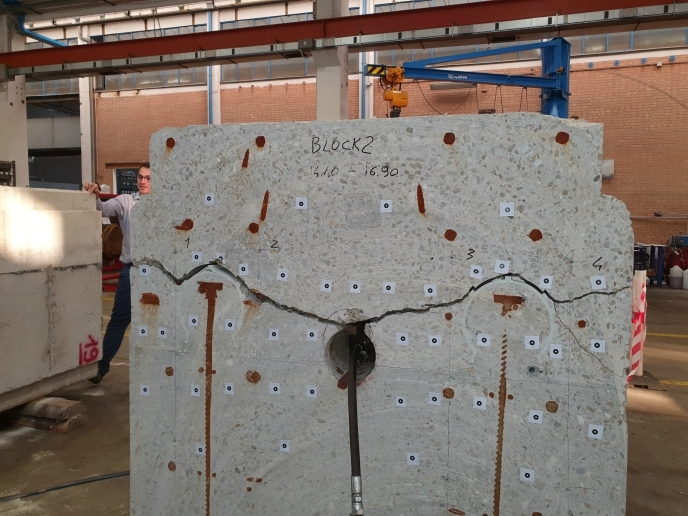Going underground – higher quality diaphragm walls
Diaphragm walls (DWs)(opens in new window) are commonly used for the largest and most difficult below-ground projects, where they form the station ‘boxes’ and tunnel portals for metro and underground rail projects. They are constructed by completing individual rectangular reinforced elements (panels) one at a time, to form a continuous wall. The vertical boundary between two adjacent panels is called a joint. DW structures can have hundreds of joints, but relatively small defects can cause a marked adverse effect on DW performance. The consequences of poor-quality joints can therefore be disastrous, with risk to people's welfare and adjacent infrastructures. Each year, accidents resulting from settlements and/or collapse of DWs injure people and cause damage worldwide totalling hundreds of millions of euro. When the depth goes below 40 metres, traditional methods for constructing DW joints become less safe: the question is how the integrity of the joints can be guaranteed at these greater depths.
Reduced risks
The EU-funded TTMJ(opens in new window) project designed and built a prototype of a new machine. The team then tested the TTMJ system's capability to deliver high-quality, tighter and safer DW joints at lower costs. “The TTMJ system utilises tracks cast into the ends of a DW panel to guide a machine (the TTMJ trimmer) to trim the concrete at the end(s) of the panel, to form a construction joint to any depth,” explains project coordinator Maurizio Siepi. The tracks are manufactured from pultruded glass-fibre-reinforced polymer (GFRP) and are approximately 150 mm in diameter. A shear key and water stop can be applied to the retaining structure, and the system allows for some tension connection between adjacent panels, if required. By profiling the primary panel with the TTMJ trimmer guided by tracks, the concrete-to-concrete contact between elements of the DW is ensured. “In this way, the quality of the joints in the completed DW can be substantially increased, reducing risks of defects,” Siepi notes.
Greater depth
The depth of DWs is steadily increasing – and none of the current joint technologies are totally reliable. As the projects for underground structures dig deeper and deeper, especially for urban development, the requirements for high accuracy increase. In such instances, problems can arise from leakage through joints due to use of the hydromill in unfavourable soils, which generates large quantities of liquid slurry requiring disposal. Inferior-quality DW joints can pose a potential risk of disaster. Therefore, in order to limit risk, projects are sometimes overdesigned to take into account possible deviations, defects and errors. "The TTMJ project will bring benefits to the specialised foundations industry by reducing the quantity of concrete to be trimmed; the system will significantly reduce the amount of concrete waste and the disposal of spent slurry, thereby reducing the carbon footprint for this particular sector,” concludes Siepi. TTMJ can ensure cost savings for the construction industry whilst delivering a superior-quality product. Furthermore, clients will experience overall project cost savings, and a better profile in terms of risk reduction, quality, and durability of walls. It will also reduce the impact on the built environment by minimising the risk of DWs adversely affecting the integrity of surrounding buildings in highly urbanised areas.



